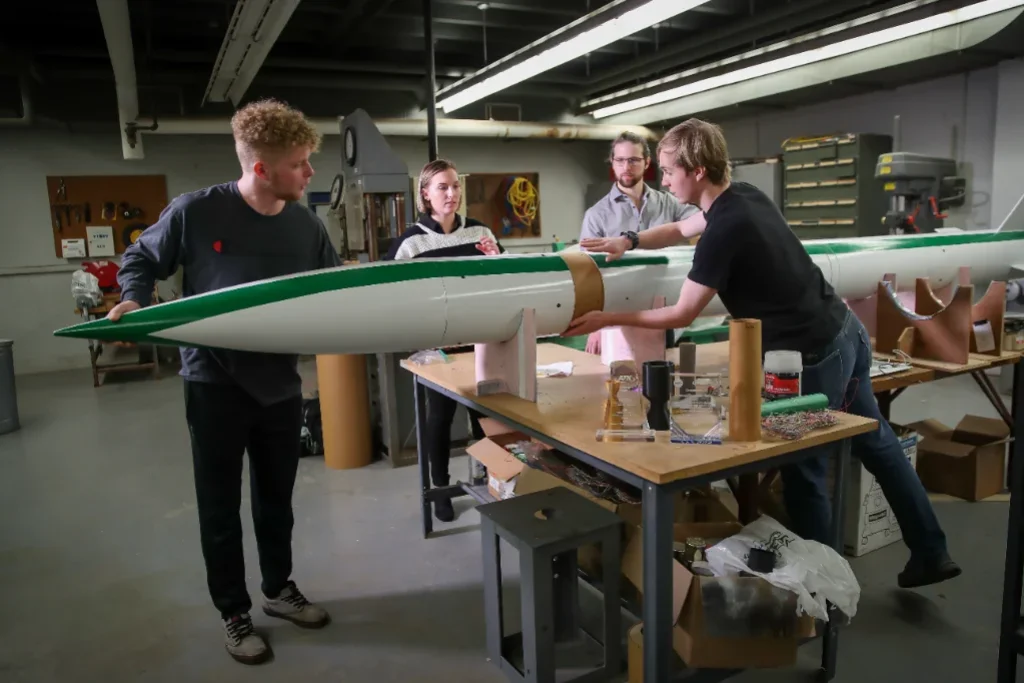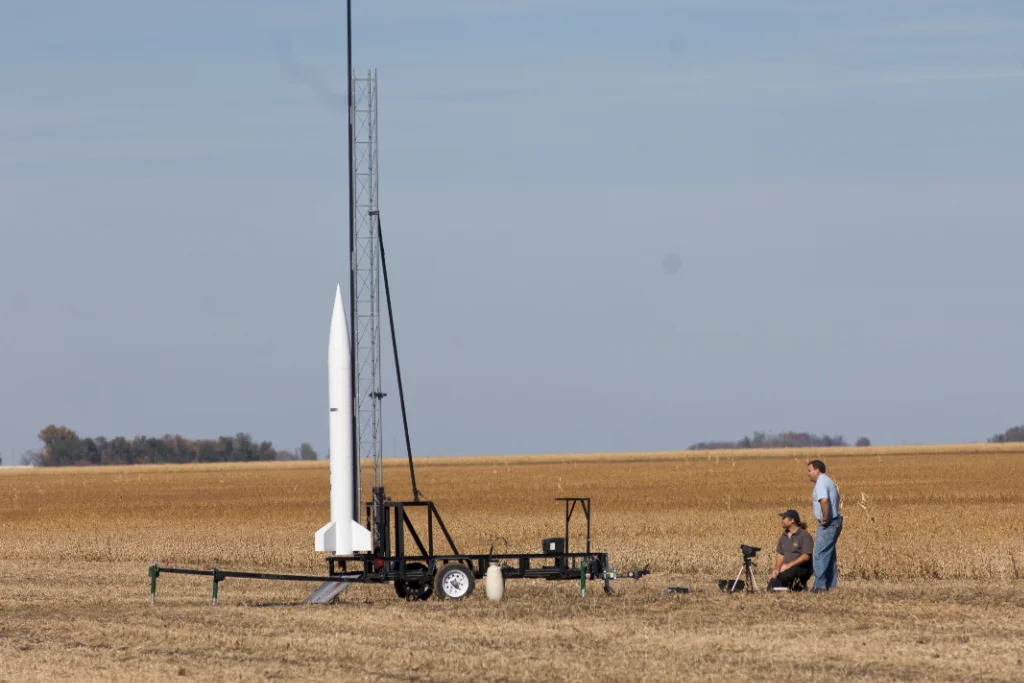
What Is Aeronautical Engineering?
This article provides an in-depth exploration of the field of aeronautical engineering, a dynamic and essential domain in the future of flight.
Request Information
It covers the intricacies of designing, developing, and maintaining aircraft, emphasizing the ever-growing need for efficient, safe, and environmentally friendly air travel.
Aeronautical engineering is a dynamic and captivating field that plays a crucial role in shaping the future of flight. It involves the design, development, and maintenance of aircraft, ensuring everything that flies in the skies operates efficiently, safely, and sustainably.
The significance of aeronautical engineering becomes increasingly important as the demand for faster, more fuel-efficient, and environmentally friendly air travel continues to grow. Imagine an airplane gracefully cruising in the sky and piercing the clouds. This marvel of engineering is the result of the dedicated efforts and ingenuity of aeronautical engineers.
What Is Aeronautical Engineering?
Aeronautical engineering is a specialized branch of engineering that focuses on the study, design, development, and maintenance of aircraft and related systems. This field encompasses a wide range of disciplines, including aerodynamics, avionics, materials science, propulsion, and structural analysis.
Aeronautical engineers work on creating cutting-edge technologies that enhance the performance, safety, and sustainability of aviation systems. They are instrumental in shaping the future of aviation.
Scope of Aeronautical Engineering
The scope of aeronautical engineering extends far beyond the design of conventional airplanes. Aeronautical engineers are involved in developing various aerospace systems, including commercial and military aircraft, helicopters, drones, and spacecraft. They are also responsible for testing prototypes, conducting research to improve existing technologies, and ensuring compliance with safety and environmental regulations.
Aeronautical engineers play an essential role in advancing aviation technologies. They are at the cutting-edge of developing innovative solutions to enhance fuel efficiency, reduce emissions, and improve the overall performance of aircraft. Aeronautical engineers also play a crucial role in addressing climate change by focusing on the development of eco-friendly aircraft and propulsion systems. They actively contribute to creating a more sustainable and environmentally conscious aviation industry.
Key Components and Concepts
Aeronautical engineering involves a deep understanding of key components and concepts that govern the behavior and performance of aircraft systems. At its core, aeronautical engineering is a harmonious blend of scientific principles and creative problem-solving. This multifaceted discipline draws upon various sub-fields, including:
Aerodynamics
Aerodynamics is the study of the behavior of air as it interacts with solid objects. This is fundamental to designing aircraft wings, control surfaces, and overall airframes. Engineers use principles such as lift, drag, and thrust to optimize the performance and efficiency of aircraft.

Avionics
Avionics is a combination of aviation and electronics, focusing on the development of electronic systems for navigation, communication, and advanced cockpit displays within aircraft. These systems contribute to the safety and functionality of modern aircraft.
Propulsion
Propulsion systems represent another critical area of aeronautical engineering. Aeronautical engineers focus on designing and optimizing engines, such as jet engines and propellers for aircraft, to achieve maximum efficiency and performance. At the same time, they also design aircraft engines that minimize environmental impact and ensure safety during flight.
Structural Analysis and Materials Science
Aeronautical engineers use structural analysis to develop aircraft with the necessary strength, durability, and weight characteristics. They apply knowledge from materials science to ensure that aircraft components are lightweight, durable, and capable of withstanding the extreme conditions of flight.
Roles and Responsibilities of Aeronautical Engineers
Aeronautical engineers play diverse roles across different stages of an aircraft’s life cycle. In the design phase, engineers use computer-aided design (CAD) software to create detailed models of aircraft components, considering factors like aerodynamics, materials, and structural integrity. In the manufacturing phase, aeronautical engineers oversee the production process, ensuring that each part meets stringent quality standards.
Testing and evaluation play a crucial role in aeronautical engineering. Engineers conduct extensive tests on prototypes. They analyze data to refine designs and identify potential issues. This iterative process helps enhance the safety, reliability, and performance of aircraft.
Beyond the design and testing phases, aeronautical engineers are also involved in maintenance and repair tasks throughout an aircraft’s operational lifespan. They work to ensure that aircraft remain in optimal condition, complying with rigorous safety standards and regulatory requirements.
Educational Pathway
Becoming an aeronautical engineer typically requires a bachelor’s degree in aeronautical engineering, aerospace engineering, or a related discipline. Aeronautical engineers need to have a solid educational foundation in engineering and aeronautical technology. Coursework often includes subjects like fluid dynamics, thermodynamics, structural analysis, and control systems.

Gaining practical experience through internships, research projects, or cooperative education programs is also valuable for aspiring aeronautical engineers, providing real-world insights into the industry. For engineers seeking advanced roles or specialized expertise, getting an advanced degree such as a master’s or Ph.D. in aeronautical engineering or a related field is advisable.
Career Opportunities and Industries
Aeronautical engineers find employment in various industries related to aviation and aerospace. Opportunities exist in commercial and military aircraft manufacturing, space exploration, satellite development, and research institutions. Some aeronautical engineers also work for government agencies, such as the FAA, NASA, or military. They contribute to national defense, aviation safety, and space exploration initiatives.
The aviation industry continues to evolve, offering new possibilities for aeronautical engineers. With the increasing use of unmanned aerial vehicles (UAVs) or drones, engineers can explore applications in agriculture, surveillance, and logistics. The private space sector is also expanding rapidly, creating additional opportunities for aeronautical engineers to contribute to groundbreaking projects.
Salary and Job Outlook
Aeronautical engineers command competitive salaries, with an average annual pay of $130,258. However, it's essential to note that this figure can vary considerably, ranging from $49,000 to $205,000 per year based on the aforementioned factors.
The job outlook for aeronautical engineers remains positive, driven by the continuous demand for advancements in aviation technology. As the aviation industry continues to expand and space exploration efforts intensify, the need for skilled aeronautical engineers is expected to grow. Companies investing in research and development for more sustainable and efficient aircraft will contribute to the demand for qualified professionals in this field.
Conclusion
Aeronautical engineering is a captivating field that combines cutting-edge technology with a passion for flight. From designing aircraft to exploring the possibilities of space travel, aeronautical engineers play a pivotal role in shaping the future of aviation. From fundamental principles of aerodynamics to cutting-edge developments in propulsion and avionics, aeronautical engineers play a vital role in shaping the landscape of aeronautical technology.
Aspiring aeronautical engineers should embark on a solid educational journey, gaining the necessary knowledge and skills to contribute to this dynamic field. The educational pathway, diverse career opportunities, and promising salary outlook make aeronautical engineering an attractive field for those with a passion for innovation and a desire to contribute to the evolution of flight.
As we continue to push the boundaries of what is possible in the skies and beyond, aeronautical engineers will undoubtedly play a crucial role in realizing the next chapter of human exploration and achievement.
FAQs
No, aeronautical engineering is not only about airplanes. It also encompasses the design, development, and maintenance of various types of aircraft, including helicopters, UAVs, and space vehicles like rockets and satellites.
Sustainability in aeronautical engineering focuses on reducing environmental impact through more fuel-efficient engines, eco-friendly materials, renewable energy integration, and optimizing flight paths for efficiency.
Aeronautical engineering focuses on designing and developing aircraft that operate within Earth's atmosphere, such as airplanes and helicopters. Astronautical engineering, on the other hand, deals with the design and development of spacecraft, including satellites, rockets, and vehicles for space exploration, operating outside the Earth's atmosphere.